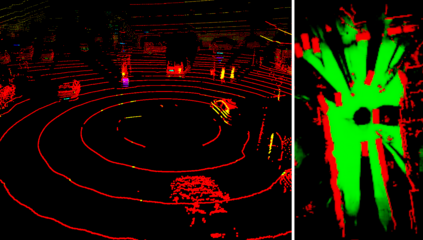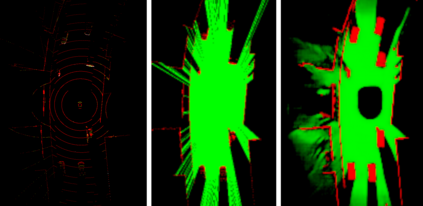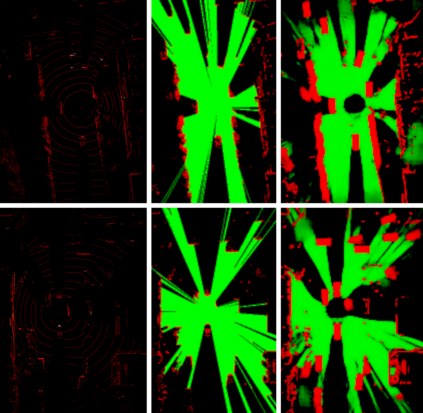Evidential occupancy grid maps (OGMs) are a popular representation of the environment of automated vehicles. Inverse sensor models (ISMs) are used to compute OGMs from sensor data such as lidar point clouds. Geometric ISMs show a limited performance when estimating states in unobserved but inferable areas and have difficulties dealing with ambiguous input. Deep learning-based ISMs face the challenge of limited training data and they often cannot handle uncertainty quantification yet. We propose a deep learning-based framework for learning an OGM algorithm which is both capable of quantifying first- and second-order uncertainty and which does not rely on manually labeled data. Results on synthetic and on real-world data show superiority over other approaches. Source code and datasets are available at https://github.com/ika-rwth-aachen/EviLOG
翻译:使用反向传感器模型(ISMs)从诸如利达尔点云等传感器数据中计算OGM; 几何ISM在估算未观测但可推断的地区的国家时显示的性能有限,而且难以处理模糊的投入; 深层次的学习型ISM面临培训数据有限的挑战,他们往往无法处理不确定性的量化。 我们提议了一个深层次的学习型框架,用于学习一种OGM算法,既能量化第一和第二级不确定性,又不依赖人工标签数据。 合成和真实世界数据的结果显示优于其他方法。 源代码和数据集见https://github.com/ika-rwth-achen/EviLOG。







